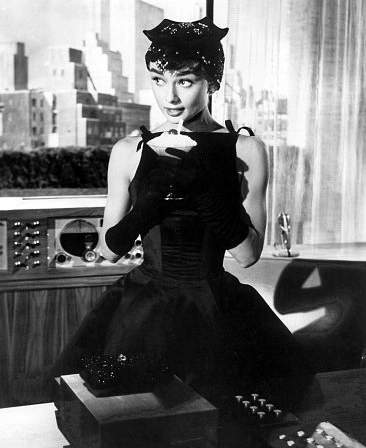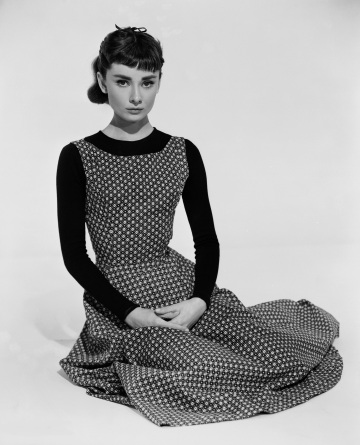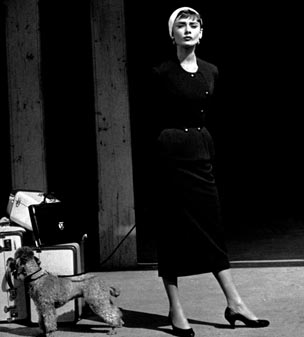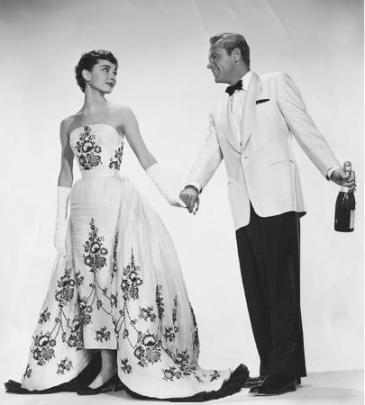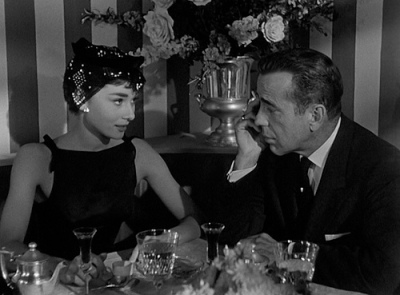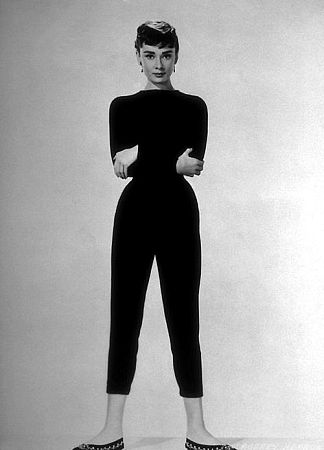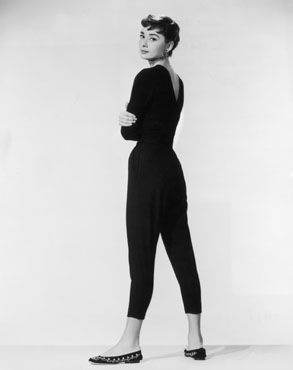It’s Film Noir weekend on BBC4, so it seems like a good time to talk about Raymond Chandler – especially since the 50th anniversary of his death earlier this year only seems to have been commemorated by the literary world.
More than any single director and more than most stars, the name Raymond Chandler is synonymous with film noir. It appears on the credits of three of the handful of movies which gave birth to the genre: Double Indemnity, The Big Sleep and Murder, My Sweet (AKA Farewell My Lovely, its British title). These masterworks – directed by Billy Wilder, Edward Dmytryk and Howard Hawks respectively – are the grandparents of such diverse modern-day classics as the The Big Lebowski, Pulp Fiction and LA Confidential.
Chandler, an American educated in upper middle-class England, brought style and panache to the detective thriller. His laconic yet poetic descriptions and the wisecracking, cynical observations made by his alter ego, the “shamus” Philip Marlowe, set him apart from other crime writers.
His stories were more than merely whodunits – which is just as well, given that plotting wasn’t his forte at all. Indeed, so complex and confusing was the plot of his 1939 novel The Big Sleep that when Howard Hawks was in the middle of filming it, he had to wire Chandler to ask him who had committed one of the peripheral murders. After re-reading his own book, Chandler replied that he had no idea.
What distinguished Chandler’s stories and books was that they were rich in atmosphere and packed with quotable passages. The language was authentically slangy, and the banter between the sexes crackled with playful and witty eroticism.
So, in 1943, when Paramount Studios bought the rights to former journalist James L Cain’s taut novelette Double Indemnity, Chandler was hired to collaborate on the screenplay with the director Billy Wilder. The Austrian emigre director had decided that Chandler was the man for the job after reading The Big Sleep and being impressed with what Chandler biographer Al Clark called the “poetic toughness” of the writing. He also appreciated Chandler’s knowledge of Los Angeles and his instincts about the kind of duplicitous seductress they would be portraying in their script.
Despite this, working together turned out to be an ordeal for both men. Wilder later recalled that “there was a lot of Hitler in Chandler” while Chandler wrote to his publisher saying: “Working with Billy Wilder on Double Indemnity was an agonising experience and has probably shortened my life”. Nevertheless, the tense collaboration produced a seminal film noir.
Double Indemnity, like a typical Chandler novel, was told in flashback with its central character, Walter Neff (Fred MacMurray), narrating his story into a dictaphone as he lies dying. It featured a classic Chandler-esque “big-league blonde”, the femme fatale (Barbara Stanwyck) who entices the hapless hero into a web of murder and deceit. With its night shots, and shadowy sequences, it, to use the slang of the day, reeked from atmosphere; Wilder’s arresting images the visual equivalent of Chandler’s evocative descriptions.
Billy Wilder, whose great run of success really began with Double Indemnity, later said of his grumpy, alcoholic, middle-aged writing partner: “He was a mess, but he could write a beautiful sentence.” He also admitted that he learned from Chandler “what real dialogue is”.
None of Chandler’s other forays into screenwriting in the 1940s were as successful – not even his excellent original screenplay for The Blue Dahlia, the 1946 thriller which starred the popular team of Veronica Lake and Alan Ladd and lent part of its title to the sensational, real-life “Black Dahlia” murder story that broke shortly after it opened in cinemas.
Of course, Chandler’s most easily recognisable gift to cinema is one of the most iconic screen personalities in movie history – of his private “dick”, Philip Marlowe. He made his movie debut under another name when the 1940 book Farewell My Lovely was used as the plot of one of the “Falcon” series of films about a gentleman sleuth played by debonair George Sanders.
Chandler’s Marlowe was no gentleman sleuth; he was very much a working, streetwise detective, available to hire for $25 a day (“plus expenses”). A loner with morals and a soft spot for the little guys whose inevitable deaths nobody else in the story cares about, Marlowe armed himself with a wry sense of humour despite being routinely “slugged” by brainless henchmen, and double-crossed by vampy blondes.
He has been portrayed numerous times on screen: Robert Altman’s spoofy The Long Goodbye (1973), has Elliott Gould portraying him as a pot-smoking slob in 1970s LA, while the reverential reworkings of Farewell My Lovely (1975) and The Big Sleep (1978) cast Robert Mitchum as a crumpled, middle-aged Marlowe. James Garner had a crack at the character in the 1969 Marlowe, while back in 1947, the actor Robert Montgomery made an admirable attempt at recreating for the cinema the first person viewpoint of The Lady in the Lake by having the camera/viewer as detective.
By far the best adaptations of Chandler’s Philip Marlowe novels, however, are The Big Sleep 1946) and Murder, My Sweet (1944), based on the book Farewell My Lovely. Both films met with Chandler’s approval, even though huge chunks of plot were lost as the stories were condensed for cinema audiences’ consumption.
The Big Sleep was rejigged at director Howard Hawks’s insistence so that the burgeoning romance between Marlowe and Mrs Rutledge onscreen – and Bogie and Bacall off it – was the main thread. But Chandler, who was the first to describe it as “a detective yarn that happens to be more interested in people than plot”, didn’t mind and actually felt that Humphrey Bogart was the ideal Marlowe. “Bogart can be tough without a gun,” he said. “Also, he has a sense of humour that contains that grating undertone of contempt.”
However, Dick Powell’s Marlowe in Murder, My Sweet is pretty impressive too – especially when you consider that instead of being established as a tough guy, Powell had to shake off his image as the crooning, goody-two-shoes hero of a string of 1930s Busby Berkeley musicals. In addition to its stylish direction – by the about-to-be blacklisted Edward Dmytryk – it boasts a terrific script which was able to utilise excerpts of Chandler’s brilliant prose by retaining Marlowe as its narrator.
And it doesn’t get much better than this: “‘OK, Marlowe,’ I said to myself. ‘You’re a tough guy. You’ve been sapped twice, choked, beaten silly with a gun, shot in the arm till you’re as crazy as a couple of waltzing mice. Now, let’s see you do something really tough – like putting your pants on.'”
CHANDLER TRIVIA
* Walter Neff, the character played by Fred MacMurray in Double Indemnity, was also the name of the local newspaper editor in The Witches of Eastwick (1987)
* Fred MacMurray only got the part of Neff after Wilder had been round the houses trying to find an actor willing to play the sap of an insurance salesman. Among those who turned it down were George Raft. As MacMurray later said: “If he’d got Bogart or somebody like that, the audience would have known instantly that the couple were going to knock off the husband.”
* Billy Wilder wasn’t the only director to have a hellish time working with Chandler. Alfred Hitchcock binned the screenplay that Chandler wrote for Strangers on a Train (1951) after the pair failed to see eye to eye.
* Two less well-known 1940s films were based on the Philip Marlowe story The High Window: Time to Kill (1942) – which starred Lloyd Nolan (best remembered now as the father in the 1986 film Hannah and Her Sisters) and was one of the Michael Shayne series of movies – and The Brasher Doubloon (1947), which starred George Montgomery as Philip Marlowe.
 Katharine Hepburn (1907-2003) is the subject of a major retrospective through February and March at the BFI in London. Much as I admire her, I find a little of her goes a long way – but she did appear in some wonderful films during her six-decade career, including several of my all-time favourites. Here’s a list of my top five Katharine Hepburn films from the vast collection screening at the BFI.
Katharine Hepburn (1907-2003) is the subject of a major retrospective through February and March at the BFI in London. Much as I admire her, I find a little of her goes a long way – but she did appear in some wonderful films during her six-decade career, including several of my all-time favourites. Here’s a list of my top five Katharine Hepburn films from the vast collection screening at the BFI. Who could forget Hepburn as the haughty, ice maiden who has a meltdown on the eve of her society wedding when Spy magazine sends an attractive young reporter (and his photographer girlfriend) to cover her big day, her still-smitten first husband turns up, and she discovers that the high moral standards she imposes on others are occasionally hard to adhere to herself. An Oscar-winning James Stewart (for my money he could have won the award for his drunk scene alone) and an especially charismatic Cary Grant also star in this glorious, sophisticated and very funny classic from director George Cukor.
Who could forget Hepburn as the haughty, ice maiden who has a meltdown on the eve of her society wedding when Spy magazine sends an attractive young reporter (and his photographer girlfriend) to cover her big day, her still-smitten first husband turns up, and she discovers that the high moral standards she imposes on others are occasionally hard to adhere to herself. An Oscar-winning James Stewart (for my money he could have won the award for his drunk scene alone) and an especially charismatic Cary Grant also star in this glorious, sophisticated and very funny classic from director George Cukor. While other middle-aged female stars were forced to play bitter and twisted women clinging on to their youth (and their men) – All About Eve, Sunset Boulevard etc – Hepburn gave a wonderful, appealingly vulnerable performance as a “spinster” falling in love for the first time during a holiday in Venice in this beautiful and sensitive film by director David Lean. Neither the 40-something Hepburn nor Venice ever looked lovelier.
While other middle-aged female stars were forced to play bitter and twisted women clinging on to their youth (and their men) – All About Eve, Sunset Boulevard etc – Hepburn gave a wonderful, appealingly vulnerable performance as a “spinster” falling in love for the first time during a holiday in Venice in this beautiful and sensitive film by director David Lean. Neither the 40-something Hepburn nor Venice ever looked lovelier. John Huston’s exciting First World War-set adventure/romance stars Hepburn as a buttoned-up missionary who finds herself (in more ways than one) when she and boozy steamboat captain Humphrey Bogart (who won his only Oscar for his performance) undertake an increasingly dangerous journey downriver, taking on the elements, the river currents and even the Germans at various points.
John Huston’s exciting First World War-set adventure/romance stars Hepburn as a buttoned-up missionary who finds herself (in more ways than one) when she and boozy steamboat captain Humphrey Bogart (who won his only Oscar for his performance) undertake an increasingly dangerous journey downriver, taking on the elements, the river currents and even the Germans at various points.


